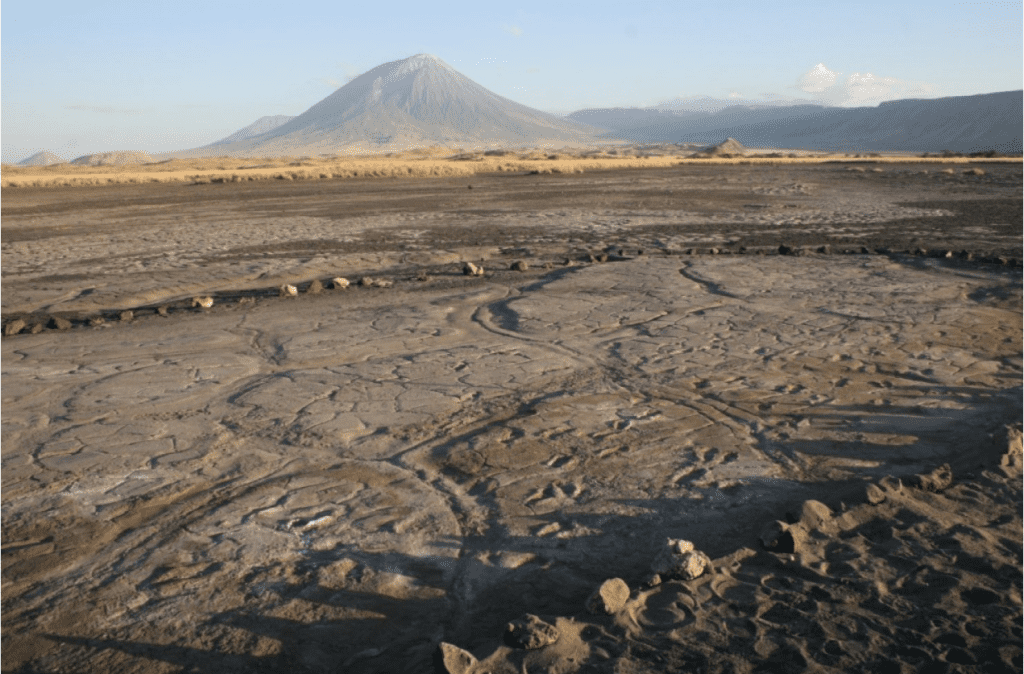
Right by the southern shore of a lake in Tanzania, only nine miles away from an active and menacing volcano which the locals call the ‘Mountain of God’, scientists have mde a monumental find. Etched and preserved in flood sediments were some 400 human footprints which are anywhere between 12,000 and 19,000 years old. No other site in the world has that many ancient human footprints and given their prehistoric age, the Lake Natron footprints might one day paint a unique story of how early humans lived and died together.
Prehistoric walk in the park
The site was found by a local a decade ago but it took a couple of years before paleontologists got on the line. When Cynthia Liutkus-Pierce, an Appalachian State University geologist, finally arrived at Lake Natron, thousands of miles away from home, she couldn’t resist shedding a tear.
“Human origins is a huge interest of mine: where we came from, and why we are who we are. It was definitely emotional to see our own history in this,” Liutkus-Pierce told National Geographic.
At first, they found some 50 footprints in the Engare Sero mud plains but later excavations revealed hundreds. These were of various shapes and sizes, some trailed straight to a finish line while others meandered.
“It’s a very complicated site,” says William Harcourt-Smith, a paleoanthropologist at the City University of New York and a member of Liutkus-Pierce’s team. “There’s one area where there are so many prints, we’ve nicknamed it the ‘dance hall,’ because I’ve never seen so many prints in one place. It’s completely nuts.”
Since only 60 miles away from Engare Sero scientists previously found 3.6-million-year-old footprints, likely made by hominid ancestor called Australopithecus afarensis, Liutkus-Pierce and colleagues presumed they were dealing with marking left by some ancestor. Much to their surprise, these were made by Homo sapiens.
We have much to owe for this treasure trove to the ‘Mountain of God’ volcano which looms over the Engare Sero flood plains. This bizarre volcano which sometimes spews thin, silvery lava, is a site of pilgrimage. It is because of some wandering pilgrims that the footprints were discovered in the first place — they literally retraced the steps of their ancestors and what a feeling it must have been when they learned the true nature of these prints which stretch over the area of a tennis court.
It was also the volcano’s ash combined with the wet ground that helped preserve the prints. Later the mud hardened and a flow of debris formed a time capsule that lasted for millennia.
Using the argon-argon dating technique, which measures the decay time of Argon-40 into Argon-39, the researchers found these ancient markings are at least 12,000 years old, as reported in Palaeogeography, Palaeoclimatology, Palaeoecology.
The next step is to identify each individual based on their markings. This will help document the whole social group. How many men, women, and children were there? How tall were they? How much did they weight? Did they run in terror or casually walked? There’s a great deal we can learn simply by studying the shape and texture of these imprints. Already, the team identified 24 distinct trackways or persons. They’ve also established for some of these individuals their age and gender, as well as walking patterns (walking or running).






